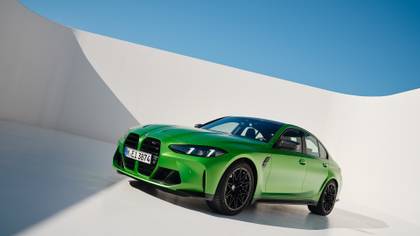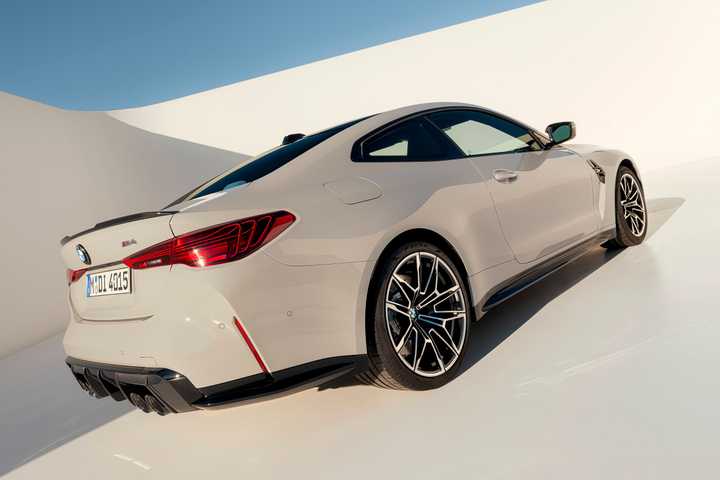Few rivalries in the performance car world are as heated as BMW M4 vs M3. Fans have argued for years about which is better — the four-door M3 or the sleek two-door M4 — but in 2025, that question has become harder to answer than ever. The differences between the BMW M3 and M4 used to be clear: one was the family-friendly sedan, the other a flashy coupe. Now, they’re closer in performance, price, and personality than most enthusiasts realize.
At a glance, it’s easy to assume the M3 and M4 are just two sides of the same coin. And, I guess, in some ways, they are. Underneath, both cars share the same powertrain, technology, and chassis tuning. Yet their characters are distinct. The M3 is the more practical, understated weapon — the car you can drive to work every day without feeling like you’re being punished for choosing performance. The M4, on the other hand, is unapologetically dramatic. It’s sharper, louder, and more attention-grabbing, the kind of car that wants to be seen and heard. But when you really dig into the M3 vs M4 BMW debate, the truth is that their differences are surprisingly thin.
Performance: The Same Heart, Slightly Different Souls

- Model
-
M3
- Segment
-
Sports Cars
- Engine
-
3.0-Liter Inline-Six
Looking at the BMW M3 vs BMW M4 specs, both cars use BMW’s 3.0-liter twin-turbocharged inline-six — the same S58 engine that’s become the soul of the modern M division. Power figures are nearly identical: the M3 Competition produces around 375 kW (503 hp) and 650 Nm of torque (479 lb-ft), while the M4 Competition pushes the same output in most trims, and the M4 CS nudges things to 405 kW (543 hp). In the real world, both rip from zero to 100 km/h in under four seconds. The M4 CS is technically quicker, but not by much — about two-tenths of a second.
So when it comes to BMW M3 vs BMW M4 specs, the numbers tell a story of near-parity. Both get the same eight-speed automatic transmission, and both offer BMW’s M xDrive all-wheel-drive system with an optional rear-drive mode for nerds. They share the same active differential, adaptive dampers, and near-perfect 50/50 weight balance. On the road, they seem equally sharp.
But there’s a subtle difference in personality, like two brothers who look alike, have the same parents, and grew up in the same house, but one is a lawyer and the other a musician. The M4 feels slightly more eager to turn in, its suspension tuned a bit stiffer, its responses a bit more immediate. It’s the car that eggs you on to push harder, with sharper steering and a tauter chassis setup. The M3, meanwhile, delivers 98 percent of that excitement with a layer of polish. It feels more composed over imperfect pavement, slightly more relaxed on the highway, and a bit less frenetic in everyday use. Simply put: The BMW M3 is just a friendly car. So in the M3 vs M4 competition, the M4 might edge ahead on the track, but the M3 is often nicer to live with on the street.
Design: The Extrovert And The Sleeper


- Base Trim Engine
-
3.0L Twin-Turbo Inline-6 Gas
- Base Trim Transmission
-
6-Speed Manual
- Base Trim Drivetrain
-
Rear-Wheel Drive
- Base Trim Horsepower
-
473 hp
- Base Trim Torque
-
406 lb-ft @ 2650 rpm
- Fuel Economy
-
16/23 MPG
- Make
-
BMW
- Model
-
M4 Coupe
- Segment
-
Compact Luxury Performance Coupe
This is where the difference between the BMW M3 and M4 becomes most obvious. The M4 is the bold, sculpted, camera-ready version of BMW’s M formula. Its long hood, exaggerated fenders, and carbon-fiber trim give it the aura of a car that belongs on a poster. The M3, on the other hand, is all about subtle power. Its proportions are more balanced, and in Touring form — a high-performance wagon in select markets — it’s arguably one of the coolest sleepers ever built.
Both share the same polarizing kidney-grille design, large air intakes, and muscular stance, but how they wear them makes a difference. The M4’s coupe body gives it an undeniable visual drama. Park it anywhere, and it draws attention immediately. The M3, though, blends in just enough to make its speed feel like a secret. That split personality — one loud, one restrained — defines the M3 vs M4 BMW aesthetic debate.
Inside, the similarities are even more pronounced. Both cabins are plastered with BMW’s curved digital display and latest iDrive system, with premium materials and German ergonomics. But there’s nuance in the execution. The M3’s interior is a little more forgiving, with seats that balance bolstering and comfort. The M4, particularly in CS trim, uses deep carbon buckets that look incredible but can be brutal in daily life. They hold you tight through corners, but make getting in and out a minor athletic event. Ultimately, the M3 feels designed for people who live with their cars. The M4 feels designed for people who worship it.
Practicality: Everyday Usability Vs. Pure Performance
No surprise — when it comes to daily usability, the M3 wins the M4 vs M3 practicality contest. Four doors and a real back seat make a difference. The M3 Touring, in particular, adds genuine utility with a wagon body that offers around 500 liters of cargo space, expanding to over 1,500 liters with the seats folded. The M4’s coupe design is sportier but less functional, with a smaller trunk and tighter rear seat access.
Ride quality follows the same theme. The M3’s adaptive suspension can soften noticeably in Comfort mode, making it livable on rough roads or long drives. It’s still firm — this is a BMW M car, after all — but it won’t beat you up the way the M4 CS can. The M4, tuned more aggressively, transmits more of the road into the cabin. Around town, it can feel a bit harsh, but get it on a smooth back road or track, and that firmness pays dividends.
Fuel economy isn’t a bragging point for either. Expect figures around 15 MPG in spirited driving, slightly higher if you’re light with your right foot. Both cars share the same five-year unlimited-mile warranty, service intervals, and a comprehensive safety suite including adaptive cruise, blind-spot monitoring, and lane-keeping assist.
In short, if your goal is to drive your M car every day, carry passengers, or occasionally haul gear, the M3 is simply the better car. The M4 is for those who see their commute as seat time.
Pricing: A Matter Of Trim And Taste
Pricing also reveals how close these two have become. In America, the M3 Touring, which is the coolest version, won’t come to America, but the other models of the M3 break down like this:
- Base M3: Starting at $77,175
- M3 Competition: Starting at $81,375
- M3 Competition xDrive: Starting at $86,475
The M4 is just a step-up in price. Here’s the breakdown:
- 2025 BMW M4 Coupe: $80,875
- 2025 BMW M4 Competition Coupe: $85,075
- 2025 BMW M4 Competition xDrive Convertible: $97,175
The gap between similarly equipped models, though, isn’t huge. In some markets, you can actually buy a better-equipped M3 for less than a base M4.
Ownership costs are nearly identical. Tires, fuel, and maintenance don’t come cheap on either car, though the M3’s less aggressive setup means you might replace consumables a bit less often. Still, if you’re shopping in this segment, you’re not counting every liter of 98-octane fuel.
The M4 might offer more bragging rights in its higher trims, but the M3 delivers nearly identical performance for less money — making it the smarter buy in many configurations.
Strengths And Weaknesses
The M3’s strengths lie in its balance. It’s brutally fast but civil enough for daily life. Its design, while understated, drips confidence. And the extra space makes it genuinely practical. The only real drawback is that it’s less dramatic than the M4. It doesn’t turn heads in the same way, and for some buyers, that matters.
The M4, on the other hand, is the extrovert of the family. It’s sharper, louder, and more focused. The higher-spec versions, especially the M3 vs M4 Competition and CS trims, deliver slightly better track performance and stronger visual impact. But that comes with compromises in comfort and cost. The M4 demands more from its driver, both in attention and tolerance.
The Debate That Never Ends
So, what’s the real difference between the BMW M3 and the M4? Technically, very little. Emotionally, though, quite a bit. They’re built from the same DNA, powered by the same engine, and engineered to deliver the same rush. The M3 is the car for those who want speed and performance, but without giving up practicality. The M4 is for drivers who don’t have to worry about picking up the kids from ballet and smashing cheezi-ts in the seat.
If you strip away the badges, the truth is that the BMW M4 vs M3 debate isn’t about which car is better — it’s about what kind of driver you are. The M3 rewards restraint and versatility. The M4 rewards passion and enthusiasm.
In 2025, BMW has blurred the lines so completely that choosing between them isn’t about specs anymore. It’s about identity. And whichever side of the M3 vs M4 BMW argument you land on, the good news is this: it’s a large target you can’t really miss.









